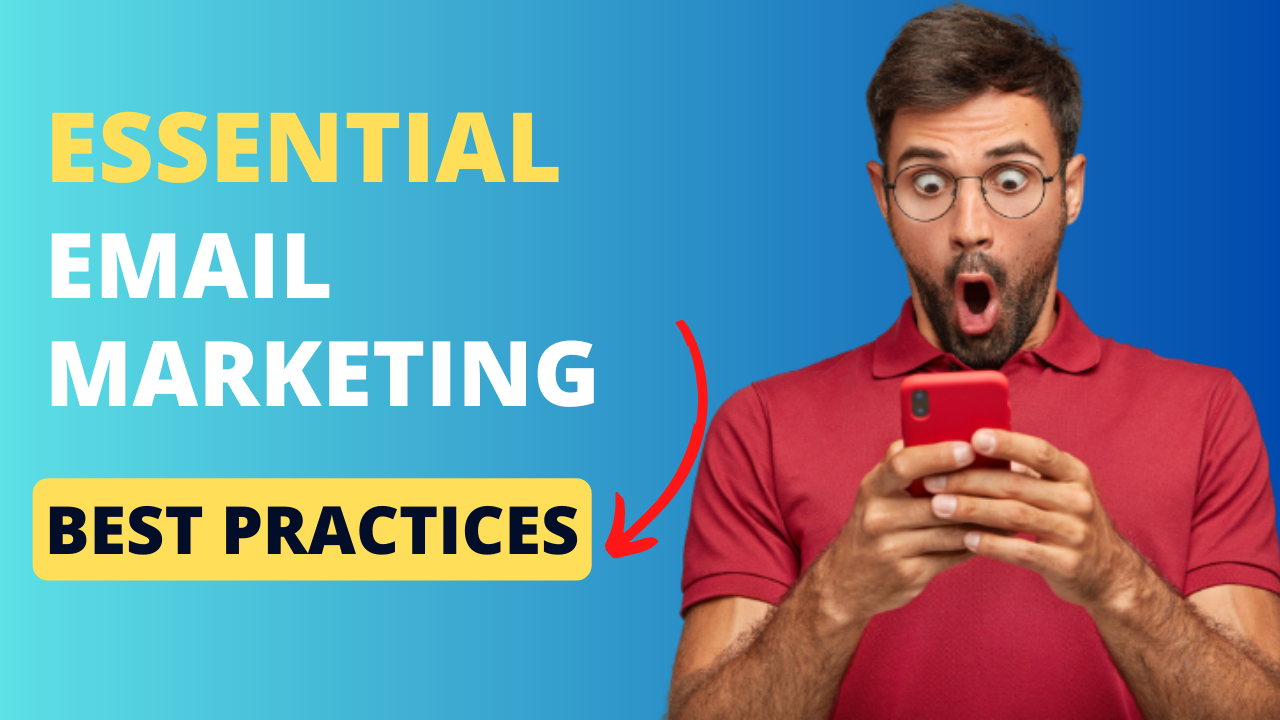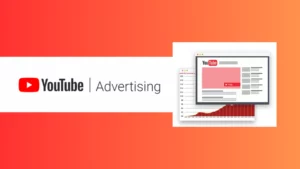In today’s digital age, email marketing continues to be a powerful tool for businesses to connect with their audience, build relationships, and drive conversions. However, with the ever-increasing volume of emails being sent and received, it is crucial to implement essential email marketing best practices to ensure your messages stand out and resonate with recipients. This article will guide you through the key practices that will help you optimize your email marketing campaigns and achieve success.
Table of Contents
- Introduction: The Power of Email Marketing
- Building a Quality Email List
- Crafting Compelling Subject Lines
- Personalization and Segmentation
- Creating Engaging and Relevant Content
- Optimizing Email Design and Layout
- Mobile Responsiveness
- Call-to-Action (CTA) Placement and Design
- A/B Testing and Analytics
- Email Deliverability and Spam Filters
- Automation and Drip Campaigns
- Maintaining Consistency and Frequency
- Compliance with Privacy Regulations
- Analyzing and Improving Campaign Performance
- Discover ” #1 ROI Focused Email Marketing Guide: Best Practices, Rules, and Real Life Examples to Get the Most ROI Out of Your Email Marketing Campaigns”
- Essential Email Marketing Best Practices: A Step-by-Step Example
- Conclusion
- FAQs (Frequently Asked Questions)
1. Introduction: The Power of Email Marketing
Email marketing remains one of the most effective ways to reach your target audience directly. It allows you to deliver personalized messages, build brand loyalty, and generate valuable leads. By leveraging email marketing, businesses can establish long-term relationships with customers, drive website traffic, and increase sales.

2. Building a Quality Email List
A strong foundation for successful email marketing begins with a high-quality email list. Focus on growing your list organically by implementing strategies such as creating engaging opt-in forms, offering valuable incentives, and utilizing social media to attract subscribers. Remember to regularly clean your list to remove inactive or unsubscribed contacts, ensuring optimal engagement rates.
Read More: Mastering Email Marketing
3. Crafting Compelling Subject Lines
The subject line is the first impression your email makes on recipients. It plays a crucial role in determining whether your email gets opened or sent to the dreaded spam folder. Craft concise, attention-grabbing subject lines that pique curiosity and clearly communicate the value of your email content. Avoid using spam-triggering words and excessive punctuation to maintain deliverability.
4. Personalization and Segmentation
Personalization is key to connecting with your audience on a deeper level. Segment your email list based on demographics, preferences, purchase history, or engagement levels. Tailor your content to each segment, addressing their specific needs and interests. By delivering relevant and personalized emails, you can significantly improve open rates, click-through rates, and conversions.
5. Creating Engaging and Relevant Content
Compelling content is the heart of a successful email marketing campaign. Craft emails that provide value to your subscribers by offering educational content, exclusive promotions, or industry insights. Use a conversational tone, keep paragraphs brief, and incorporate engaging visuals. Ensure your content aligns with your brand voice and resonates with your target audience.
6. Optimizing Email Design and Layout
A visually appealing email design enhances the overall user experience and encourages readers to engage with your content. Use a clean and professional layout that complements your brand’s aesthetics. Incorporate eye-catching images, well-formatted text, and clear call-to-action buttons. Optimize your design for different email clients to ensure consistent rendering across devices.
7. Mobile Responsiveness
With the majority of emails now being opened on mobile devices, it is crucial to optimize your emails for mobile responsiveness. Use a responsive email template that adapts to various screen sizes and resolutions. Keep your email design simple and avoid small font sizes or tiny clickable elements. Test your emails on different mobile devices to ensure they are easily readable and interactive.
8. Call-to-Action (CTA) Placement and Design
Your emails should have a clear and compelling call-to-action (CTA) that directs recipients to take the desired action. Place your CTA prominently, using contrasting colors and persuasive copy. Ensure the CTA button is easy to click on both desktop and mobile devices. Use actionable language that creates a sense of urgency and clearly communicates the benefits of taking action.
9. A/B Testing and Analytics
Continuous improvement is essential in email marketing. Conduct A/B testing to experiment with different elements of your emails, such as subject lines, content, visuals, and CTAs. Analyze the results to determine which variations perform better and optimize your future campaigns accordingly. Utilize email analytics tools to track key metrics like open rates, click-through rates, and conversions.
10. Email Deliverability and Spam Filters
To ensure your emails reach the intended recipients’ inboxes, you must focus on email deliverability. Maintain a healthy sender reputation by using a reputable email service provider, authenticating your domain, and adhering to email deliverability best practices. Monitor your email deliverability rates and address any issues promptly to minimize the chances of your emails being marked as spam.
11. Automation and Drip Campaigns
Automation allows you to streamline your email marketing efforts and deliver timely, relevant messages to your subscribers. Implement automated drip campaigns that trigger emails based on specific actions or events, such as welcoming new subscribers, nurturing leads, or re-engaging inactive subscribers. Leverage the power of automation to save time, increase efficiency, and provide a personalized experience.
12. Maintaining Consistency and Frequency
Consistency is crucial in building brand recognition and trust with your subscribers. Develop a consistent email schedule and stick to it. Whether it’s weekly newsletters or monthly promotions, ensure your subscribers know what to expect from your emails. However, be mindful not to overwhelm them with excessive frequency, as it may lead to unsubscribes or decreased engagement.
13. Compliance with Privacy Regulations
Respecting privacy regulations, such as the General Data Protection Regulation (GDPR) or the California Consumer Privacy Act (CCPA), is essential in email marketing. Obtain explicit consent from subscribers before sending them marketing emails, provide a clear unsubscribe option, and handle their personal data securely. Familiarize yourself with the relevant regulations to maintain compliance and build trust with your audience.
14. Analyzing and Improving Campaign Performance
Regularly analyze the performance of your email marketing campaigns to identify areas for improvement. Track key metrics, such as open rates, click-through rates, conversion rates, and unsubscribe rates. Use this data to gain insights into your subscribers’ behavior, preferences, and pain points. Make data-driven decisions to optimize your email content, design, segmentation, and overall strategy.
Read More: Marketing Ebooks: 10 Powerful Resources to Master the Game
Discover ” #1 ROI Focused Email Marketing Guide: Best Practices, Rules, and Real Life Examples to Get the Most ROI Out of Your Email Marketing Campaigns”

Get the most out of your email marketing campaigns and get the highest return on investment (ROI). The author takes you through every step of the setup process, helps you understand what you need to test, gives tips and tricks to optimize your campaigns, and gives you real-life examples of how to put this into practice.
Essential Email Marketing Best Practices: A Step-by-Step Example
In this step-by-step example, we’ll follow John, a marketer who wants to develop his email marketing system. John will utilize the popular email marketing platform Mailchimp and create a campaign consisting of 5 to 6 emails for a seamless follow-up process. Let’s explore how John can implement essential email marketing best practices in a clear and actionable manner.
Step 1: Setting Up the Email List
John begins by signing up for Mailchimp and creating his email list. He ensures that he adheres to email marketing best practices by building an organic list of subscribers who have willingly opted in to receive his emails. John creates opt-in forms on his website and social media channels, offering valuable incentives such as exclusive content or discounts to encourage sign-ups.
Step 2: Crafting Attention-Grabbing Subject Lines
To engage his audience right from the start, John focuses on creating compelling subject lines. He uses A/B testing to experiment with different approaches and determines that personalized subject lines generate higher open rates. For example, instead of a generic subject line like “Check out our latest offers,” John tests a personalized subject line like “John, exclusive offers just for you!”
Step 3: Personalization and Segmentation
John understands the importance of personalization and segmentation to deliver targeted content to his subscribers. Using the data collected during the sign-up process, he segments his email list based on demographics, interests, or past purchases. This allows him to send tailored content that resonates with each segment. For instance, John creates a segment for customers who have made previous purchases and sends them personalized recommendations or exclusive loyalty rewards.
Step 4: Creating Engaging and Relevant Content
To keep his subscribers engaged, John focuses on creating valuable and relevant content. He writes concise paragraphs that deliver clear messages and uses engaging visuals to support the text. For example, John may send a newsletter highlighting industry trends, sharing tips and tricks, or announcing upcoming events or product launches. He ensures that the content aligns with his brand voice and addresses his subscribers’ pain points.
Step 5: Optimizing Email Design and Layout
John pays attention to the design and layout of his emails to provide a visually pleasing experience for his subscribers. He selects a clean and professional template provided by Mailchimp and customizes it with his brand colors and logo. He incorporates eye-catching images, uses clear headings, and strategically places the call-to-action (CTA) buttons. John ensures that the emails are mobile-responsive, allowing recipients to access the content easily on their smartphones or tablets.
Step 6: Implementing a Follow-Up Email Campaign
John understands the importance of nurturing his leads through a follow-up email campaign. He designs a series of 5 to 6 emails that are sent at strategic intervals to guide subscribers through the customer journey. For instance, after a subscriber signs up, John sends a welcome email introducing his brand and providing a special discount. Over the next few days, he follows up with additional emails, sharing relevant content, offering personalized recommendations, or highlighting customer success stories.
Step 7: Analyzing and Optimizing Campaign Performance
John regularly analyzes the performance of his email campaign using Mailchimp’s analytics tools. He tracks open rates, click-through rates, and conversion rates to gain insights into his subscribers’ engagement levels. If he notices a particular email with low engagement, he tests different variations, such as subject lines or content, to improve its performance. John also monitors subscriber feedback and uses it to refine his future campaigns.
By following these step-by-step best practices, John can effectively develop his email marketing system using Mailchimp. Remember, the key is to continuously test, analyze, and optimize to enhance engagement and drive desired outcomes.
15. Conclusion
Effective email marketing requires a strategic approach and adherence to best practices. By following the essential email marketing practices outlined in this article, you can create engaging and impactful campaigns that drive results. Remember to prioritize personalization, deliver valuable content, optimize design and mobile responsiveness, and continuously analyze and improve your campaigns.
FAQs (Frequently Asked Questions)
Q1: How often should I send marketing emails?
It is recommended to maintain a consistent email schedule without overwhelming your subscribers. Depending on your audience and the nature of your business, sending weekly or bi-weekly emails is generally effective. However, always monitor your engagement rates and adjust your frequency accordingly.
Q2: Can I use purchased email lists for my campaigns?
It is not advisable to use purchased email lists. Building an organic email list ensures that you are targeting individuals genuinely interested in your brand. Using purchased lists can lead to low engagement rates, high unsubscribe rates, and potential legal issues.
Q3: What is the best time to send marketing emails?
The best time to send marketing emails depends on your target audience and their preferences. Conduct A/B testing to determine the optimal sending times for your specific audience. However, studies have shown that Tuesdays, Wednesdays, and Thursdays tend to have higher open rates.
Q4: How can I improve my email open rates?
To improve email open rates, focus on crafting compelling subject lines that create curiosity or provide a clear value proposition. Personalize your subject lines and experiment with different tactics, such as using numbers, emojis, or asking questions. Additionally, maintaining a clean and engaged email list contributes to higher open rates.
Q5: How do I ensure my emails are not marked as spam?
To avoid spam filters, ensure your emails comply with email deliverability best practices. Use a reputable email service provider, authenticate your domain with SPF, DKIM, and DMARC records, and avoid using spam-triggering words or excessive punctuation. Regularly monitor your email deliverability rates and take prompt action to resolve any deliverability issues.




